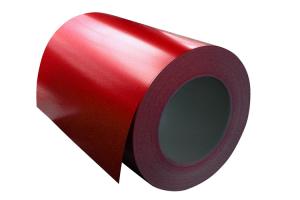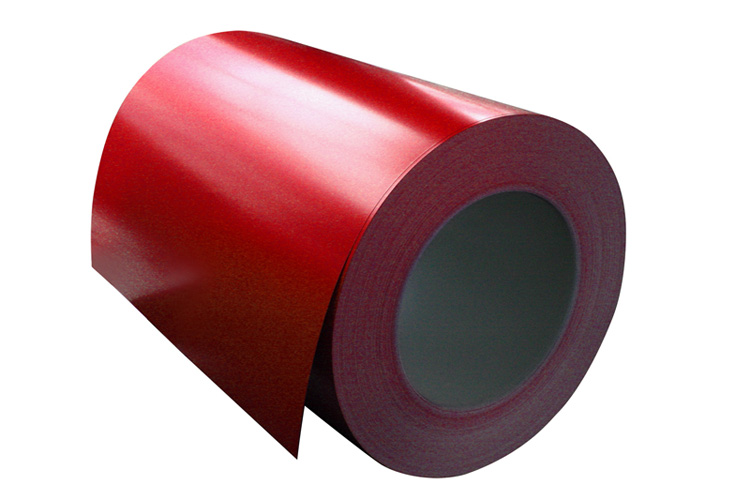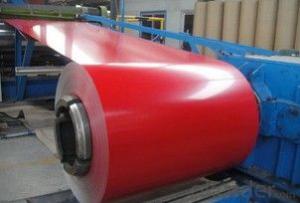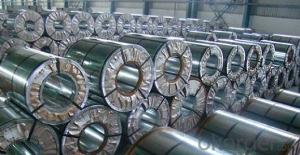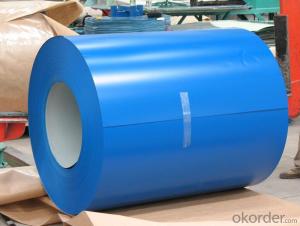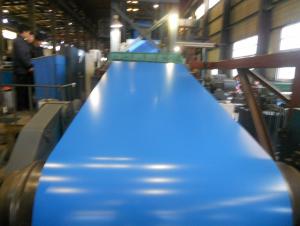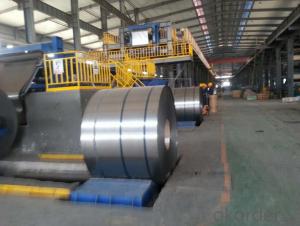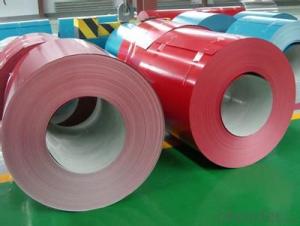Prepainted Galvanized Steel Coil
- Loading Port:
- China Main Port
- Payment Terms:
- TT OR LC
- Min Order Qty:
- -
- Supply Capability:
- -
OKorder Service Pledge
Quality Product, Order Online Tracking, Timely Delivery
OKorder Financial Service
Credit Rating, Credit Services, Credit Purchasing
You Might Also Like
PREPAINTED GALVANIZED STEEL COIL
Specification:122O*O.47,Ral 5O12
Steel Grade & Standard: CG20140923
Zinc Coating Mass:Z180
Surface Treatment: non-chromate, oiled
Coil ID:508mm Coil Weight:6-10MT
Package Type:EYE TO SIDE
Thickness Tolerance:+/-0.02mm Width Tolerance:+/-5mm
Zinc Coating Tolerance:-/+10g/m2
- Q: Molton is formed at 2800 F. Thats a fact. Now jet fuel at its hottest is 1800. Where does the other 1000 degress come in? And it was found at the WTC 7 site. Was this hit by a plane? A simple fire COULD NOT produce molton. This is a fact. Molton is formed during controlled demoliton of a building since all the bombs in the buiding go off and its very very hot. The fact there was MOLTON at the site is shocking to some since it is IMPOSSIBLE for molton to form from jet feul alone. Impossible. It needed another source. Now the claim that I'll get is that it weakened the stell but then we would find weak steel not molton. Why do you seem to throw this off of your shoulder? Do you not want to belive it? I'm no jet fuel guy but I know you cannot make molton by using just jet fuel. This is really proof that 9/11 was an inside job.
- Aircraft frames are made out of aluminum and magnesium which burn very hot once they reach flame point. The other 1000 degrees can come from fire being in a a semi confined space, and heat building over time, plus you can reduce the heat if you add pressure which the building was under to start with. I did like a 2 year stint testing construction materials, I know a little bit about how they behave.
- Q: where to buy Transformer steel?Used in transformers and electric motors.
- Here okorder
- Q: How are steel coils used in the production of signage?
- Steel coils are commonly used in the production of signage as they provide a durable and versatile material for creating sturdy sign structures. The steel coils are typically shaped and cut into desired sizes and shapes, allowing for the construction of various types of signage, such as billboards, road signs, and building signs. The steel's strength and resistance to corrosion ensure the longevity of the signage, making it suitable for outdoor use. Additionally, steel coils can be painted or coated with vinyl to add color and graphics, enhancing the visual appeal of the signs.
- Q: I have been thinking of buying a knife that says it has damascus steel. The reason for the question is that many people told me that damascus steel does not exist anymore, and that damascus nowadays is fake. Is this true???
- damascus steel it says is made from ore containing either tungsten or vanadium, although most tools I've seen are made from chrome vanadium, it wouldn't be hard in this day and age to get the proper material. Although it DOES say in wikipedia that apparently the technique died out a long time ago due to shortage of the ore. Then it talks about reproduction attempts. So theoretically, yes, it could be the deal deal. But it does refer at the bottom about damascend steel which is made with a different technique, you could be buying one of those. NEXT TIME JUST LOOK UP THE ARTICLE YOURSELF AND READ IT
- Q: How are steel coils used in the manufacturing of safety systems?
- Steel coils are used in the manufacturing of safety systems as they serve as a key component for reinforcement and support. These coils are often used in the construction of structural elements such as beams, columns, and frames, providing strength and stability to ensure the safety and durability of the overall system. Additionally, steel coils are utilized in the production of safety equipment such as guardrails, barricades, and safety barriers, offering protection and preventing accidents in various industries and applications.
- Q: What are the common coil processing methods?
- Some common coil processing methods include slitting, shearing, blanking, leveling, and edging.
- Q: What are the different methods of slitting edge trimming for steel coils?
- There are several different methods of slitting edge trimming for steel coils, each with its own advantages and applications. 1. Rotary Shear Slitting: This method involves using rotary knives to cut through the steel coil. The knives are mounted on a rotating shaft and create a shearing action as they pass through the coil. Rotary shear slitting is a versatile method that can handle a wide range of coil thicknesses and materials. It is commonly used for high-volume production and provides a clean and precise cut. 2. Crush Cut Slitting: In this method, the steel coil is pressed against a hardened anvil by a rotating knife. The knife cuts through the coil by crushing it against the anvil. Crush cut slitting is suitable for thinner gauge materials and is often used for materials that are sensitive to shearing forces. It provides a clean cut but may have limitations in terms of coil thickness and width. 3. Razor Slitting: Razor slitting involves using a razor blade to cut through the steel coil. The blade is mounted on a rotating shaft and creates a slicing action as it passes through the coil. Razor slitting is commonly used for thin and delicate materials that require a precise and burr-free edge. It provides a clean cut but may have limitations in terms of coil thickness and width. 4. Shear Slitting: This method involves using a pair of opposing blades to shear through the steel coil. The blades move past each other to create a scissor-like cutting action. Shear slitting is commonly used for heavier gauge materials and provides a clean and precise cut. It is suitable for high-speed production and can handle a wide range of coil thicknesses and materials. 5. Laser Slitting: Laser slitting utilizes a high-powered laser beam to cut through the steel coil. The laser beam is guided by computer-controlled optics to create a precise and clean cut. Laser slitting is suitable for a wide range of coil thicknesses and materials, including high-strength steels. It provides a high level of accuracy and can handle complex cutting patterns. Each of these methods has its own advantages and considerations, depending on the specific requirements of the steel coil slitting operation. Factors such as coil thickness, material type, desired edge quality, and production volume will influence the choice of slitting method.
- Q: which elements are alloyed to make stainless steel?A Fe, CB Fe, MnC Fe, NiD Fe, CrE Fe, Cr, Ni
- E. Stainless steel is mainly comprised of Cr and Ni. Steel is an alloy composed mainly of iron. On a side note, Carbon is not really in stainless steel and it is only less than .1%
- Q: How are steel coils processed for edge trimming or shearing?
- Steel coils are typically processed for edge trimming or shearing by using specialized machinery such as slitters or shears. These machines are designed to cut the excess edges of the coil, ensuring uniform and precise dimensions. The coils are fed through the machine, where the excess material is removed, leaving clean and straight edges. This process helps to enhance the quality and appearance of the steel coils, making them ready for further manufacturing or fabrication.
- Q: How do steel coils perform in high-temperature applications?
- Steel coils perform well in high-temperature applications due to their excellent heat resistance and structural stability. The high melting point of steel allows it to maintain its strength and shape even at elevated temperatures, making it suitable for various industries such as automotive, construction, and manufacturing. Additionally, steel coils can withstand thermal expansion and contraction without warping or deforming, ensuring reliable performance and durability in extreme heat conditions.
Send your message to us
Prepainted Galvanized Steel Coil
- Loading Port:
- China Main Port
- Payment Terms:
- TT OR LC
- Min Order Qty:
- -
- Supply Capability:
- -
OKorder Service Pledge
Quality Product, Order Online Tracking, Timely Delivery
OKorder Financial Service
Credit Rating, Credit Services, Credit Purchasing
Similar products
Hot products
Hot Searches
Related keywords
